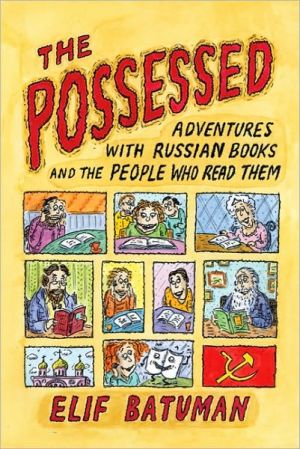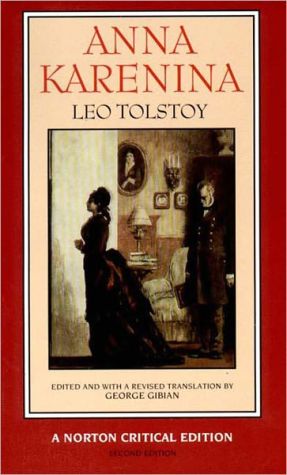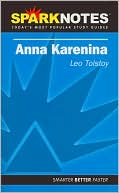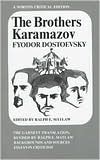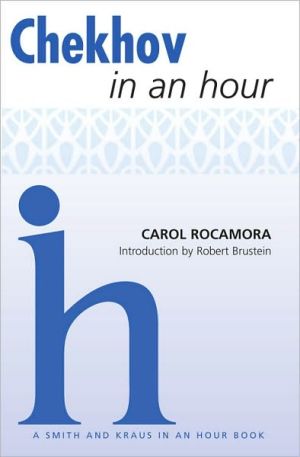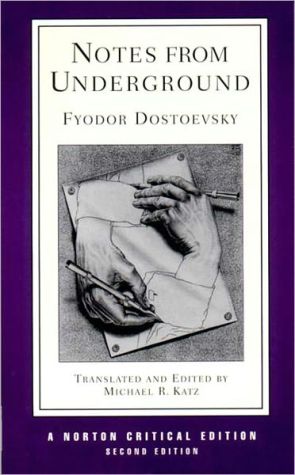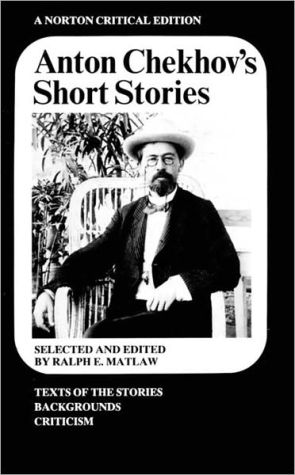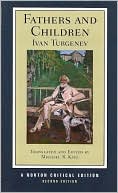Anna Karenina in Our Time: Seeing More Wisely
In this invigorating new assessment of Anna Karenina, Gary Saul Morson overturns traditional interpretations of the classic novel and shows why readers have misunderstood Tolstoy’s characters and intentions. Morson argues that Tolstoy’s ideas are far more radical than has been thought: his masterpiece challenges deeply held conceptions of romantic love, the process of social reform, modernization, and the nature of good and evil. By investigating the ethical, philosophical, and social issues...
Search in google:
In this invigorating new assessment of Anna Karenina, Gary Saul Morson overturns traditional interpretations of the classic novel and shows why readers have misunderstood Tolstoy’s characters and intentions. Morson argues that Tolstoy’s ideas are far more radical than has been thought: his masterpiece challenges deeply held conceptions of romantic love, the process of social reform, modernization, and the nature of good and evil. By investigating the ethical, philosophical, and social issues with which Tolstoy grappled, Morson finds in Anna Karenina powerful connections with the concerns of today. He proposes that Tolstoy’s effort to see the world more wisely can deeply inform our own search for wisdom in the present day.The book offers brilliant analyses of Anna, Karenin, Dolly, Levin, and other characters, with a particularly subtle portrait of Anna’s extremism and self-deception. Morson probes Tolstoy’s important insights (evil is often the result of negligence; goodness derives from small, everyday deeds) and completes the volume with an irresistible, original list of One Hundred and Sixty-Three Tolstoyan Conclusions.
Anna Karenina in Our Time \ Seeing More Wisely \ \ By GARY SAUL MORSON \ Yale University Press \ Copyright © 2007 Gary Saul Morson\ All right reserved.\ ISBN: 978-0-300-10070-9 \ \ \ \ \ Chapter One \ Tolstoy and the Twenty-first Century\ Tolstoy Today\ Don't think, but look! -WITTGENSTEIN (Philosophical Investigations, paragraph 66)\ Anna Karenina and War and Peace are typically considered to be among the finest, if not the very finest, novels ever written and Tolstoy ranks among the world's greatest authors. Students I teach express the vague but widely held belief that if they have read War and Peace they are educated. Perhaps no other literary work commands such respect.\ Tolstoy has struck writers and readers for the unsurpassed realism of his two great novels. Arnold spoke for many when he declared that Anna Karenina is not so much a work of art as a piece of life, and Babel imagined that if the world could express itself directly, it would write like Tolstoy. We constantly read: consider the range of human experience he describes supremely well. Compared to Tolstoy, even Homer, Cervantes, George Eliot, and Dostoevsky seem like mere specialists in a few closely related aspects of life. Tolstoy equals each in his or her own preferred topics and alternates effortlessly among them. By common consent, he describes battle as no one from Homer to Stendhal ever has. Tolstoy once declared that, without false modesty, he could say that War and Peace resembles the Iliad, and its panorama of life and emotions exceeds even that book's epic sweep. With his supreme realism, Tolstoy makes all earlier descriptions seem as if they have been reproduced from the same template.\ Of course, Tolstoy could also describe the usual subject matter of novels, including domestic life, romance, courtship, and adultery, with supreme mastery. We find moments of lyric ecstasy and tragic despair. The sensation of a young woman at her first ball, of a man lying in wait at a wolf hunt, or of guests at a wedding compete with descriptions of peasant life and the thrill of intellectual discussion. No one, except perhaps Dostoevsky, has ever made ideas so palpable.\ Still more remarkable, Tolstoy could make ordinary people and everyday life interesting. Not just the heroic Prince Andrei, but also Nikolai Rostov, whom the author accurately describes as "mediocre," compels attention. Tolstoy makes us care when nothing special happens, as in scenes where children play and mothers watch over them. He fascinates with lengthy descriptions of events that contribute virtually nothing to the plot. Among his most memorable passages are the wolf hunt in War and Peace and the mowing scene in Anna Karenina, which could be omitted with no discernible effect on the plot and yet strike us as unique in world literature.\ Tolstoy not only commands a wider range than other great writers, but also does what none of them ever could. Only twice in world literature has the experience of Christian love and a conversion to loving one's enemies been made psychologically convincing: once in War and Peace and a second time in Anna Karenina. Dostoevsky, a serious Christian and Tolstoy's only real rival as literature's best psychologist, tried again and again to accomplish this feat and never succeeded, as he well knew.\ As Dostoevsky specializes in the unconscious, Tolstoy shows us the overlooked complexities of consciousness. Between two thoughts that apparently follow immediately one upon the other, Tolstoy sees several steps. He notices a series of almost instantaneous mistaken interpretations that we reject too fast to remember. He knows the tiniest moments of his characters' conscious processes better than the characters themselves ever could. He describes what takes place at the periphery of their attention, which, by definition, never comes into sufficient focus for conscious recollection. Tolstoy gives new meaning to authorial omniscience because, in a comparison often made, his resembles a god's.\ Tolstoy cared most about what he called the innumerable "tiny alterations" of consciousness, where decisions we mistakenly attribute to a few critical moments are made. The need to include so many tiny alterations accounts in part for the great length of his works. Where others saw relative simplicity, he saw immense complexity. The closer we look at consciousness, and the smaller the interval we choose to examine, the less straightforward it seems and the more alternative outcomes we discern. Not surprisingly, Tolstoy wrote with withering sarcasm of all theories that view human experience, whether individual or social, as governed by relatively simple laws.\ Tolstoy's contemporaries noted that he alone appreciated the way the body shapes the mind. In Tolstoy, thoughts and feelings follow not only from earlier ones and from our reaction to internal and external events, but also from the postures of the body. As one critic of his time observed, everyone knows that if one feels like praying one will assume a kneeling position, but Count Tolstoy understands that if by some chance one should find oneself in a kneeling position, one may very well feel like praying. The body has a mind of its own. It does not merely reflect our intentions and emotions but also manifests its own internal dynamic, no less than does the mind. It is a mistake to assume that each gesture derives from some mental process. Reading Tolstoy, we see that, but for our body's activity, our feelings and thoughts would be quite different.\ In Tolstoy, and perhaps in Tolstoy alone, we find the author describing bodily actions that may mean absolutely nothing. In War and Peace, Pierre sees that his dying father, incapacitated by stroke and unable to speak, is looking straight at him. He and everyone else present wonder what that ineffable look could signify. Tolstoy comments: "When Pierre approached, the Count looked directly at him but with a gaze the intent and significance of which no man could have fathomed. Either it meant absolutely nothing more than that having eyes one must look somewhere, or it was charged with meaning" (W&P, 118).\ In Tolstoy, both possibilities-significance and total insignificance-are always possible. Unlike other great novels, his do not allow us to assume that if an event is described it must mean something. He wants us to see that life is not like that and so he makes his novels not like that. Not everything in life has a "sufficient reason"; sometimes things happen just "for some reason," a favorite phrase of Tolstoy's. Between "sufficient reason" and "for some reason" lies a universe of difference. Others have thought that life was chancy, but writers from Aristotle on assumed that successful art has to exclude what does not fit the design of the work even if that exclusion makes art unlike life.\ If an event happens in Dickens, we know it must lead to something or it would not be there, but in Tolstoy, as in life, events sometimes lead nowhere. With unparalleled power, Tolstoy argues that sheer contingency exists. He finds ways to make the unfitting fit our experience of life.\ If one surveys the European novel, one may reflect that people do not seem to work very much. Who ever works in a Jane Austen novel? Some novelists describe work as hell. Only rarely does it define a life. Adam Bede impresses because George Eliot describes carpentry as creativity as well as drudgery. But only Tolstoy, so far as I know, gives us anything like the mowing scene in Anna Karenina, where we get, step by tiny step, the strain and pleasure, the merged mental and physical effort, the self-consciousness and loss of self, of a difficult job we are in the process of learning. Tolstoy understood what we have come to call "flow."\ To many, the natural response to Tolstoy has been to gape with wonder. It was long thought that somehow Tolstoy's purely instinctive and natural gifts allowed him to describe the rhythms of life without thought or art. In the West, the myth of Russians as some sort of natural men more in touch with unrefined experience contributed to the idea that Tolstoy's unsurpassed realism happened without design. As a result, critics imagined there was no intention, no artistry, no meaning in Tolstoy beyond that of direct experience of life, and so he had nothing to teach us. We must appreciate his work, but can offer nothing by way of explication, because there is nothing to explicate. When I wrote my book on War and Peace (1987), I discovered shelves of studies explicating Dostoevsky's works and thoughts, but, apart from discussions of his life and works as a whole, almost no books in English about Tolstoy's fiction. The most notable exception, Isaiah Berlin's essay "The Hedgehog and the Fox," stood almost alone for its insight into Tolstoy's key concerns.\ Nothing could be further from the truth than the idea that Tolstoy wrote without thought and without artistic devices. If one reads the stories written before the two great novels, one sees him experimenting with devices that cannot be missed, such as narration in the second person or by a horse. By the time he wrote War and Peace and Anna Karenina, Tolstoy had so internalized those devices that he could deploy them with a subtlety that concealed them. Many readers do not even notice the passages in Anna Karenina narrated from the perspective of Levin's dog Laska. These passages certainly do not feel artificial, as does Tolstoy's earlier story with an equine narrator. In the two great novels, he deployed devices so as to make narration appear totally without artifice and his world seem perfectly natural. How did he do so?\ However strange it may sound, I think he accomplished this feat by close observation and philosophical reflection. If one really understands human experience, one can reproduce it such that devices used to do so will disappear. That was Tolstoy's credo and the belief of the artist he describes in Anna Karenina. One must first see what is there, not what convention, received opinion, or the histories of psychology, art, or philosophy tell us should be there. Subtract what everyone "knows," then look. The surprising appearance of previously unnoticed phenomena, the result of such unclouded looking, should lead one to wonder what the world must really be like. Such wonder begets Tolstoy's philosophy, which in turn shapes his writing.\ By such looking, Tolstoy learned that the world differed radically from all usual accounts. His understanding of time shaped his plots and his descriptions of the stream of consciousness. As he watched social reforms fail or succeed, he reflected on the reasons, both in his novels and outside them. The fact that his novels have seemed so real-not just realistic-ought to suggest that his ideas were, in large measure, true. For if they had been false, his novels would have seemed so as well.\ In his day, Tolstoy was known as a nyetovshchik-someone who says nyet (no) to all received ideas. Maintaining apparently perverse opinions, he was what Sergey Ivanovich in Anna Karenina calls the work's autobiographical hero, Konstantin Levin, a "paradoxicalist." Tolstoy questioned the fundamental premises of Western thought since the seventeenth century, premises that in his time appeared so obviously true that doubting them seemed like believing in a flat earth. The beliefs Tolstoy questioned remain with us today. Indeed, some predominate even more in our time than in his.\ At the beginning of the twenty-first century, some thinkers have found our dominant paradigms wanting. We have, after all, just lived through the bloodiest century in human history. Perhaps we got something wrong?\ Those who have felt that current received truths might not be true after all have sometimes seen in Tolstoy the greatest exponent of ideas that have been alive for centuries. This tradition, or countertradition, includes thinkers as diverse as Alexis de Tocqueville, Edmund Burke, Carl von Clausewitz, Jane Jacobs, Sir Isaiah Berlin, Ludwig Wittgenstein, Stephen Toulmin, Stephen Jay Gould, and Freeman Dyson. In a sense, it also includes the implicit wisdom of a genre, the realist novel. The last five thinkers I have listed explicitly cite Tolstoy as an influence. He was, indeed, Wittgenstein's favorite author. Because Tolstoy not only questioned the dominant view but also offered an alternative, he should have much to teach us today.\ What he has to teach us, and how Anna Karenina teaches it, is the theme of the present book. A great deal is at stake. If we are to avoid the horrors of the twentieth century, we may need to think differently. Perhaps Tolstoy's insights with their inspiring prescience will help us. They may also help people to live their individual lives more fully and with greater self-awareness. Even where they are overstated, mistaken, or simply perverse they may initiate a dialogue in which something vital may be said.\ So iconoclastic is Anna Karenina that some of its challenges to common opinion have not even been noticed. When a belief is too iconoclastic, it may remain invisible. We cannot even imagine that someone could think that way, no matter how explicit he may be. In explicating this novel, I try to make the paradoxical sensible and the invisible perceptible.\ Let us begin by considering the paradigms that Tolstoy rejected.\ Theoretical and Practical Knowledge\ Two stories describe the origin of the rationalist paradigm created in the seventeenth century. Narrating one of them, Stephen Toulmin argues that the religious wars between Protestants and Catholics-especially the Thirty years War from 1618 to 1648-proved so horrific that philosophers sought ways of thinking that might settle disputes without bloodshed. They sought a court above both sides-the court of pure, abstract reason. For reason is neither Catholic nor Protestant, old or new, aristocratic or bourgeois, but universal, general, and timeless. Like the axioms and theorems of Euclid, or Plato's idea of the timeless forms, reason so conceived pays no respect to persons, special histories, or partisan traditions. The aspiration to create such a rational system inspired Descartes, Leibniz, Spinoza, and others who have come to be known as the seventeenth-century rationalists and their heirs. They provided a model of what real knowledge should be, and therefore marked a decisive break with previous thinking. (See Cos.)\ In contrast to philosophy from Aristotle to Montaigne, this conception of rationality favored argument by abstract principles over consideration of particular cases. In the Nichomachean Ethics, Aristotle maintained the opposite, that some cases cannot be encompassed by any conceivable principles: "The Good has no universal form, regardless of the subject matter or situation: sound moral judgment always respects the detailed circumstances of particular cases" (Cos, 31-32). Precisely because principles are general, they cannot anticipate the oddities of special cases.\ By contrast, in the 1650s, Henry More and the Cambridge Platonists established ethical reasoning as a matter of abstract theory. From that point on, reasoning by cases appeared unphilosophic, if not evasive or dishonest. The very term "casuistry"-reasoning by cases-came to be pejorative, as it usually is today. At best, reasoning by cases could be considered a place-holder until a true theory could be developed.\ From the rationalist perspective, successful theories apply to particular cases as surely as the Pythagorean theorem applies to all right triangles. As we shall see, Tolstoy regarded ethics in exactly the opposite way. Agreeing with Montaigne, he saw, with his keen eye for particularities, all the ways in which generalizations oversimplify.\ Abstract rationality favors deduction from axioms or the discovery of abstract laws allowing us to do away with appeals to experience. Once those laws are known and applied, nothing is "left over." In War and Peace, the wise general Kutuzov asserts the opposite. Prince Andrei comes to learn Kutuzov's lesson that good judgment, which cannot be formalized, surpasses theoretical knowledge not only in battle but also in all other human affairs. Indeed, one could tell Prince Andrei's story as the journey from theory to experience, from mere rationality to wisdom. We do not recognize a wise person, capable of making ethical decisions, by that person's knowledge of the right theory. Rather, he or she has reflected with sensitivity on countless cases. The process of doing so never ends and, unlike Euclidian geometry, cannot guarantee the right answer. In his belief that the quest for certainty deludes, Tolstoy is one of the great skeptics. (See Orwin, "Antiphilosophical Philosophy.")\ (Continues...)\ \ \ \ \ Excerpted from Anna Karenina in Our Time by GARY SAUL MORSON Copyright © 2007 by Gary Saul Morson. Excerpted by permission.\ All rights reserved. No part of this excerpt may be reproduced or reprinted without permission in writing from the publisher.\ Excerpts are provided by Dial-A-Book Inc. solely for the personal use of visitors to this web site. \ \
Contents Acknowledgments....................xiList of References and abbreviations....................xiiiIntroduction....................1Chapter One. Tolstoy and the Twenty-first Century....................7Chapter Two. Dolly and Stiva: Prosaic Good and Evil....................33Chapter Three. Anna....................55Introduction to a Contrary Reading....................57Part One. Anna and the Kinds of Love....................62Part Two. Anna and the Drama of Looking....................79Part Three. Anna's Suicide and the Totalism of Meaning....................118Chapter Four. Levin....................141Part One. Why Reforms Succeed or Fail....................143Part Two: Levin's Idea, Its Corollaries and analogues: Self-improvement, Christian Love, Counterfeit art, and authentic Thinking....................168Part Three. Meaning and Ethics....................197One Hundred Sixty-Three Tolstoyan Conclusions....................223Notes....................235Index....................245

